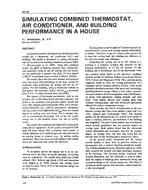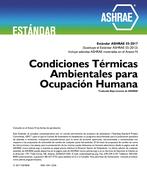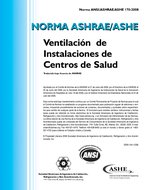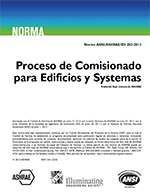Description
A simulation model is developed that includes detailed models for a thermostat, air conditioner (AC), and building. The model is developed by adding thermostat and AC models to the building simulation program FSEC 1.1 (kerestecioglu et al. 1989). Using this combined model, the effect of building thermal mass, thermostat, and equipment sizing on the AC cycling rate and energy use are studied for a summer day (July 23) in a typical 1,500 ft2 wood-frame house located in Miami, Florida. The results show that the extra thermal and moisture mass associated with furnishings in the home cannot be neglected when predicting the cycling rate for an AC system. For this building, using a thermostat without an anticipator, the maximum cycling rate (N max) decreased from 5.9 to 1.4 when thermal mass was added. The impact of thermostat parameters, such as anticipator size, switch dead band, and time constants, was found to be consistent with previous studies (Lamb and Tree 1981. Nguyen and Goldschmidt 1983). For a conventional thermostat (i.e, with an anticipator), anticipator size (Tao) and switch differential (Delta Tspt) have the largest impact on cycling rate and droop. For a summer day, with a conventional thermostat, 9% of the AC system energy use in the modelled house was due to cycling losses. The results also emphasise the importance of properly sizing the AC equipment. An AC system oversized by 50% used 9% more energy than a properly sized system. A similar efficiency loss would be expected when the load on an existing house is reduced (e.g., by adding ceiling insulation). These two cases provide evidence that cycling losses are important and cannot be neglected.
KEYWORDS: calculating, thermostats, unit air conditioners, buildings, performance, housing, computer programs, heavy, lightweight, equipment, sizing, energy consumption, summer, USA, subtropics, furniture, oversizing, operations, optimisation
Citation: ASHRAE Trans. 1992, vol.98, Part 1, Paper number 3579, 370-380, 5 figs., 11 tabs., refs.
Product Details
- Published:
- 1992
- File Size:
- 1 file , 1.1 MB
- Product Code(s):
- D-17806




